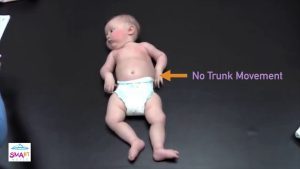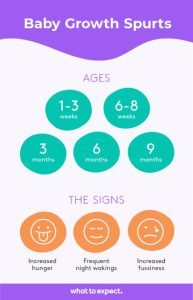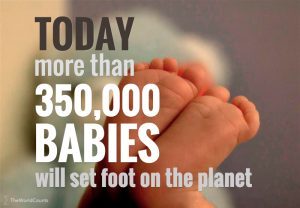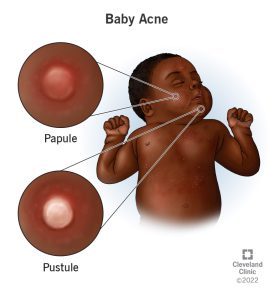Babies are born with around 270 bones, but as they grow, these bones fuse together, resulting in adults having 206 bones. Babies are born with approximately 270 bones.
With this rapid growth, their bodies undergo significant changes, including the formation and fusion of bones. As a result, the number of bones in a baby’s body differs from that of an adult.
Understanding the development of a baby’s skeletal system is not only fascinating but also essential for parents and caregivers to ensure the proper care and support for the baby’s healthy growth. Let’s delve into the intriguing world of baby bones and explore how their skeletal structure evolves over time.
Formation Of Bones, Bones do babies have
Babies are born with an amazing 270 bones, but as they grow, some of these bones fuse together, resulting in adults having 206 bones. Understanding the formation of bones and their growth and development is crucial in ensuring the health and well-being of babies. Let’s take a closer look at how these tiny bodies develop and grow their bones.
Process Of Ossification
In the early stages of a baby’s development, bones begin as soft tissue known as cartilage. Over time, a process called ossification transforms the cartilage into bone tissue. This occurs primarily during fetal development and through the early years of life, resulting in the formation of a majority of the skeletal system. Ossification is essential for creating a solid framework that provides support and protection for the body.
Growth And Development
As babies grow, their bones undergo a continuous process of growth and development. New bone tissue is formed while older bone tissue is reabsorbed. This dynamic process keeps bones strong and allows for the adjustment of bone structure as the body grows. Proper nutrition, physical activity, and a healthy lifestyle play a vital role in supporting the growth and development of bones in babies. This process is crucial for ensuring that the skeletal system can effectively support the body and facilitate movement, ultimately contributing to overall well-being.
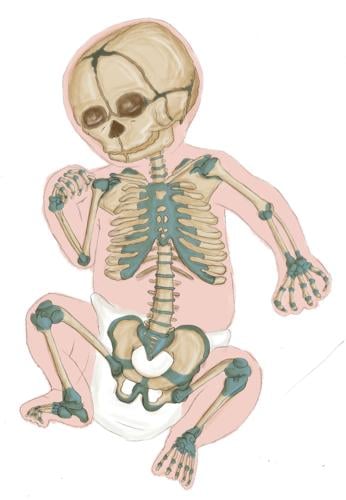
Types Of Bones
A baby’s body is composed of several types of bones. These bones may differ in shape and function, playing critical roles in the growth and development of the little one. In this section, we will explore the different types of bones based on their shape and the functions they perform.
Bones can be classified based on their shape. Each shape serves specific purposes within the body.
- Long Bones: These are the most common type of bones in the baby’s body. They are significantly longer than they are wide and are found in the arms and legs. Long bones provide support, mobility, and structure to the body.
- Short Bones: As the name suggests, short bones are almost equal in length and width. They are mostly present in the wrists and ankles, where they provide stability and support to the small joints.
- Flat Bones: Flat bones are thin and relatively broad. They can be found in the skull, ribs, and shoulder blades. These bones protect vital organs and provide a large surface area for muscle attachment.
- Irregular Bones: Irregular bones have unique shapes and do not fall into the other categories. Examples include the vertebrae in the spine and the facial bones. They have specialized functions such as protecting the spinal cord and providing facial structure.
Each type of bone performs a specific function within a baby’s body, contributing to their growth and overall well-being.
| Types of Bones | Functions |
|---|---|
| Long Bones | Provide support, enable movement, and facilitate the production of blood cells in the bone marrow. |
| Short Bones | Offer stability and support to small joints, allowing for a wider range of movement. |
| Flat Bones | Protect vital organs such as the brain, heart, and lungs. They also serve as important sites for muscle attachment. |
| Irregular Bones | Protect and support internal structures, such as the spinal cord, and provide shape to different parts of the body, including the face. |
Understanding the different types of bones and their functions is crucial in appreciating the complexity and efficiency of the baby’s skeletal system.
Number Of Bones In Babies
Have you ever wondered how many bones do babies have when they are born? Babies’ bodies go through numerous changes as they develop, and one significant transformation occurs in the skeletal system. In this blog post, we will explore the number of bones in babies at birth and the developmental changes throughout infancy.
At Birth
When a baby is born, their skeletal system consists of approximately 300 bones. This number might come as a surprise since adults typically have only 206 bones. The reason for this disparity is that some of the baby’s bones are smaller and eventually fuse together as they grow.
Here is a table summarizing the number of bones in different parts of a baby’s body at birth.
| Body Part | Number of Bones |
|---|---|
| Skull | 29 |
| Spine | 33 |
| Ribs | 24 |
| Upper Limbs | 60 |
| Lower Limbs | 60 |
Developmental Changes Throughout Infancy
As babies grow and develop, some of their bones begin to fuse together, resulting in a reduction in the overall number of bones over time. By the time a child reaches adulthood, the skeletal system consists of 206 bones, as certain bones have merged into larger structures.
Here are the major developmental changes that occur in a baby’s skeletal system throughout infancy:
- The fontanels, which are soft spots on a baby’s skull, fuse together as the baby’s head grows. This process usually completes within the first 12 to 18 months.
- The epiphyses, or growth plates, at the ends of long bones contribute to the increase in bone length during a baby’s growth. As the baby grows older, these growth plates turn into solid bone.
- The vertebrae in the spine gradually fuse together, creating a more rigid structure to support the increasing demands placed on it.
These developmental changes allow babies to develop coordination and strength as they reach various milestones, such as sitting, crawling, and eventually walking.
In conclusion, babies are born with approximately 300 bones, but some of these bones fuse together as they grow. Understanding the number of bones in babies and the developmental changes throughout infancy provides valuable insight into the fascinating journey of human growth and development.

Factors Influencing Bone Growth
Babies have around 270 bones at birth, but they gradually fuse together as they grow older. Factors influencing bone growth include nutrition, genetics, physical activity, and hormonal factors.
Factors Influencing Bone Growth Nutrition:
Nutrition plays a crucial role in the development of strong and healthy bones in babies. A well-balanced diet rich in essential nutrients such as calcium, vitamin D, phosphorus, and protein supports optimal bone growth and mineralization.
Physical Activity:
Physical activity is fundamental in fostering bone development in babies. Engaging in weight-bearing activities such as crawling, standing, and walking stimulates bone strength and density.
Common Bone-related Concerns In Babies
The health and well-being of babies are a top priority for parents, and bone-related concerns are common among newborns and infants. It’s essential to be aware of potential issues that may arise regarding their bones.
Fractures
Babies are susceptible to fractures due to their fragile bones. Common causes include accidental falls or mishandling during daily activities.
Developmental Conditions
Some babies may experience developmental conditions affecting bone growth. Conditions like rickets can impact bone strength and development.
Maintaining Healthy Bones In Infants
Babies are born with approximately 300 bones, but as they grow, some of these bones fuse together and the adult human body typically has 206 bones. Ensuring that infants have a healthy diet and engage in physical activity can help in the proper development and maintenance of their bones.
Maintaining Healthy Bones in Infants Babies have around 300 bones at birth, with some of them eventually fusing together as they grow. Ensuring that infants develop strong and healthy bones is essential for their overall growth and development.
Importance Of Vitamin D
Vitamin D is crucial for proper bone development in babies as it helps in the absorption of calcium. Sunshine is a natural source of Vitamin D, and it is recommended to expose babies to sunlight for a limited time each day.
Recommended Activities
Engaging in activities that promote movement and weight-bearing exercises can help in bone development. Tummy time, crawling, and gentle stretching exercises are great for infants. – Encourage outdoor play for exposure to sunlight. – Offer foods rich in Vitamin D like fortified cereals and fatty fish. – Ensure proper hydration for healthy bone growth. By following these recommendations, parents can support the healthy bone development of their infants and set a strong foundation for their future skeletal health.
How Many Bones Does A 2 Year Old Baby Have?
A 2-year-old baby has around 270 bones, as the cartilage in their bodies will eventually fuse into fewer bones.
How Many Bones Does A 6 Year Old Have?
A 6-year-old typically has around 206 bones in their body, as they haven’t fully fused yet.
How Many Bones Does An 8 Year Old Have?
An 8-year-old has approximately 206 bones in their body.
Why Do Newborn Babies Have More Bones Than Adults?
Newborns have more bones because some fuse together as they grow. Babies have 270 bones while adults have 206. This is due to the process of ossification.
Conclusion
Understanding the number of bones in a baby’s body is essential for their growth and development. Knowing this can help parents monitor their child’s health and ensure proper care. By being aware of the skeletal system, caregivers can promote a healthy and active lifestyle for their little ones.

